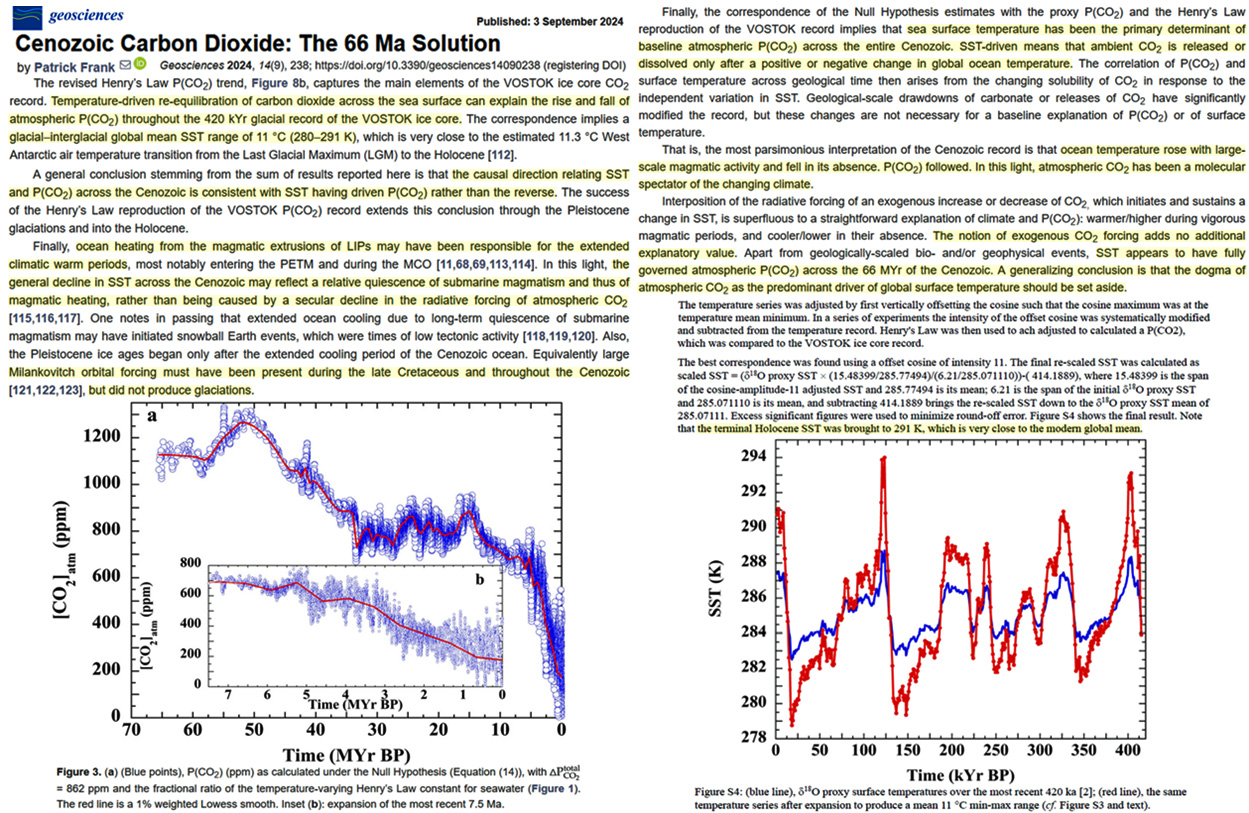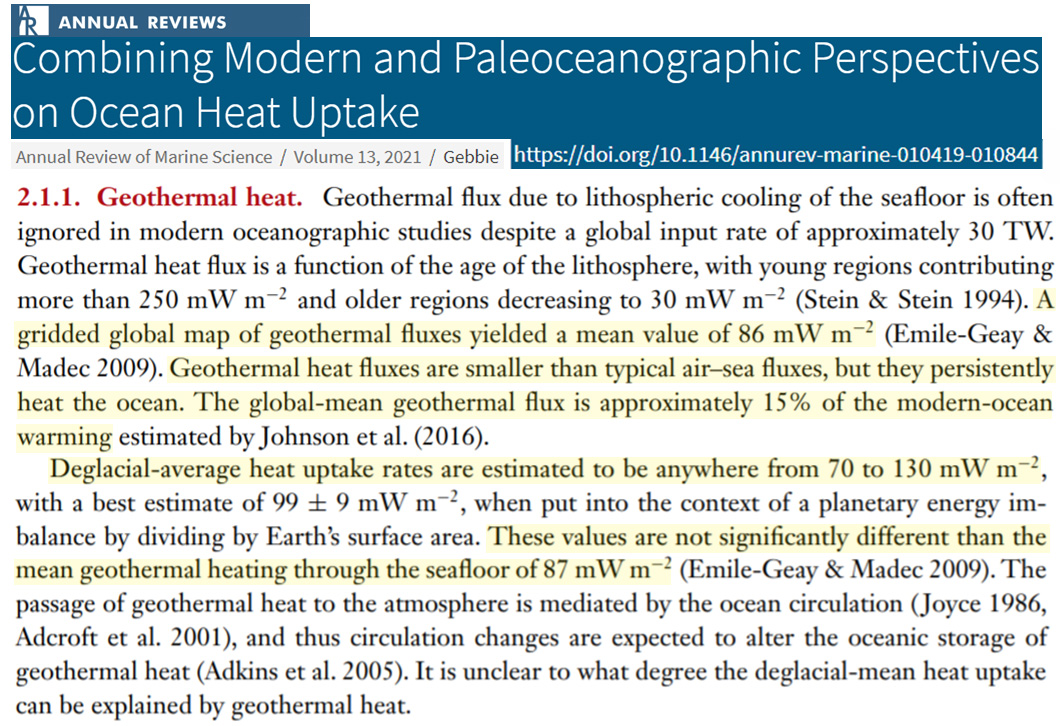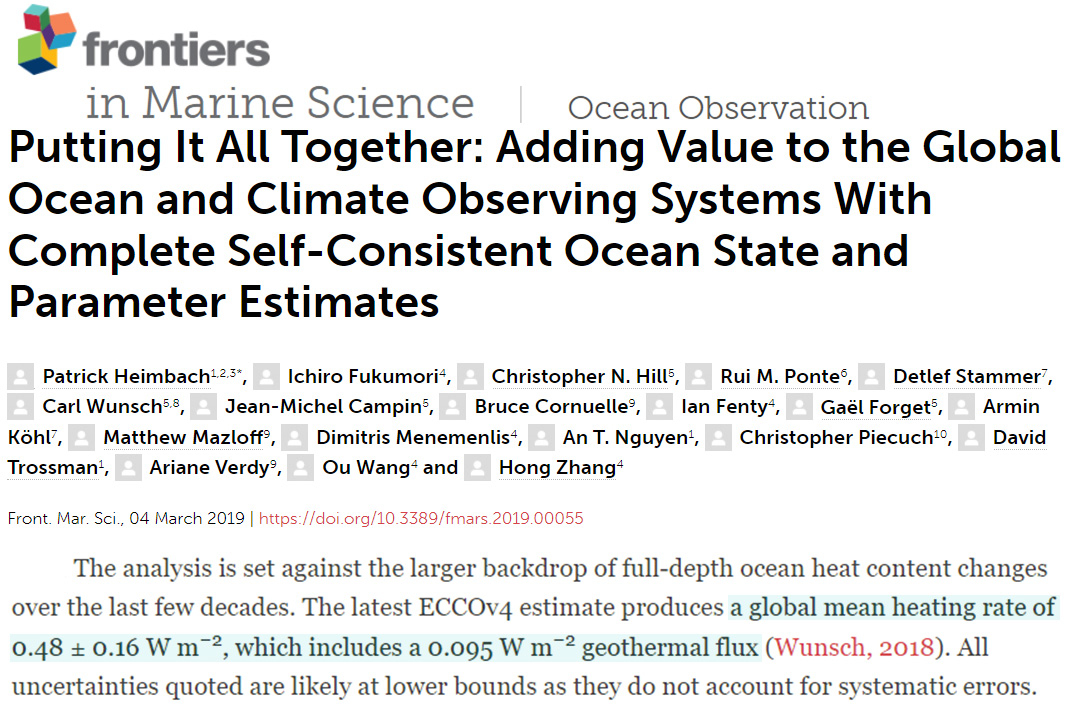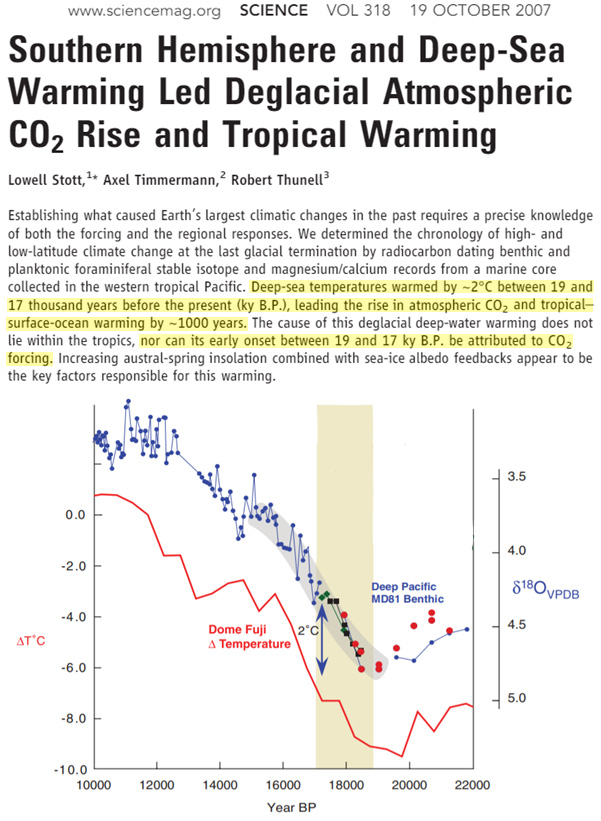“…sea surface temperature has been the primary determinant of baseline atmospheric P(CO2) across the entire Cenozoic” – Frank, 2024
A new study analyzes paleo atmospheric CO2 levels using the modern-day observation that oceans release more CO2 as they warm and less CO2 as they cool – a reference to Henry’s Law.
“…ambient CO2 is released or dissolved only after a positive or negative change in global mean ocean temperature.”
Application of Henry’s Law allows for the calculated interpretation that the reconstructed 100s of ppm (±200-800 ppm) CO2 variations over the last 66 million years (the Cenozoic), as well as throughout the last 420,000 years of ice core records, are driven or “primarily determined” by sea surface temperature (SST).
“Temperature-driven re-equilibration of carbon dioxide across the sea surface can explain the rise and fall of atmospheric P(CO2) throughout the 420 kYr glacial record of the VOSTOK ice core. The correspondence implies a glacial-interglacial global mean SST range of 11°C (280-291 K)…”
The study introduces undersea tectonics variability as a explanatory mechanism for warm and cool periods. High magma activity periods warmed the oceans, and the additional warmth led to elevated (>1000 ppm) atmospheric CO2 levels (net outgassing) as a consequence. During less active magmatic activity periods, the oceans cooled, and this cooling drove the drawdown in atmospheric CO2.
A Henry’s Law SST-induced CO2 concentration record implies glacial-interglacial global mean sea surface temperature amplitudes reached 11°C (280 to 291 K) over the last 420,000 years. 291 K is a few degrees warmer than the modern temperature calculation (288 K).
“…the general decline in SST across the Cenozoic may reflect a relative quiescence of submarine magmatism and thus of magmatic heating, rather than being caused by a secular decline in the radiative forcing of atmospheric CO2.”
“…the most parsimonious interpretation of the Cenozoic record is that ocean temperature rose with large-scale magmatic activity and fell in its absence. P(CO2) followed. In this light, atmospheric CO2 has been a molecular spectator of the changing climate.”
The presence of a geothermal mechanism explaining warm vs. cold SST periods precludes the need for orbital factors, such as the Milankovitch cycles, to drive glaciations and deglaciations.
“Milankovitch orbital forcing must have been present during the late Cretaceous and throughout the Cenozoic, but did not produce glaciations.”
CO2 radiative forcing is also not considered an explanatory factor in global climate changes over the last 66 million years.
“The notion of exogenous CO2 forcing adds no additional explanatory value.”
“A generalizing conclusion is that the dogma of atmospheric CO2 as the predominant driver of global surface temperature should be set aside.”
So, to summarize, temperature variations are the “primary determinant” of CO2 variations, with CO2 variation a consequence rather than a causal factor in climate. Atmospheric CO2 is thus a (1) “molecular spectator,” (2) has “no explanatory value” in ocean temperature variability, and (3) “should be set aside” as a considered causal factor in glaciations and deglaciations.

Image Source: Frank, 2024
It may be important to note that approximately 15-20% of current global warming (0.095 W/m² of the 0.48 W/m² heating rate) can be attributed to geothermal heat fluxes through the sea floor that “persistently heat the ocean” (Gebbie, et al., 2021). The value attained for geothermal heating of the ocean, 87 mW/m², is similar to that which is required to end a glacial period (melt ice sheets) and transition into an interglacial. In other words, a bottom-up ocean-warming mechanism is ongoing.

Images Source: Gebbie, 2021

Image Source: Heimbach et al., 2019
A magmatic ocean-warming mechanism driving glacial-interglacial transitions is supported by the conclusion that the ocean bottom waters warmed 2°C from 19,000 to 17,000 years ago. This is about 1000 years before the surface warmed and CO2 began rising (Stott et al., 2007), So, consistent with the conclusions of the new Dr. Frank study, geothermal heat fluxes can thus potentially explain a large portion of glacial-interglacial transitions – as well as millennial-scale global ocean temperature changes.






My hypothesis: the deep ocean warming causes the El Nino and the El Nino is the main driver of the global temperature.
An interesting question arises. Will Earth’s interior cool enough so that it stops warming the ocean and Earth becomes permanently glaciated? We’re told that the ice caps didn’t exist during the dinosaur era. Maybe Earth is on that trajectory now.
It’s a little bit more complicated than that: we also have to consider solar evolution, mountain-building, changes in ocean currents, the distribution of continents, and changes in the Earth’s atmosphere. Previous major glacial periods include the Huronian from 2400 to 2100 million years ago, the Sturtian from 690-710 mya, the Marinoan from 640-660 mya, the Karoo from 360-260 mya, and the present Cenozoic which started 35 mya. It’s probable that increased radiation from the expanding sun will render our planet sterile in as little as 1 billion years, but if the earth survives future solar expansion then it will freeze after the sun starts contracting.
Watch this
https://www.youtube.com/watch?v=eEgjuB-0bw8
Dr John Campbell.
[…] From NoTricksZone […]
[…] – New Study Finds CO2 Is Merely A Climate ‘Spectator’, A Non-Factor In Explaining Paleoclimate Cha… […]